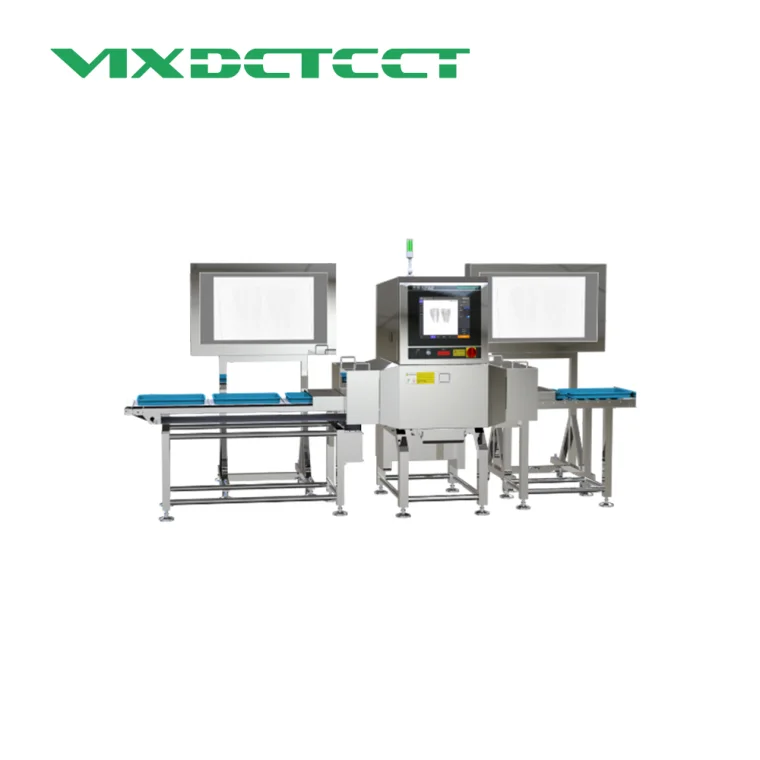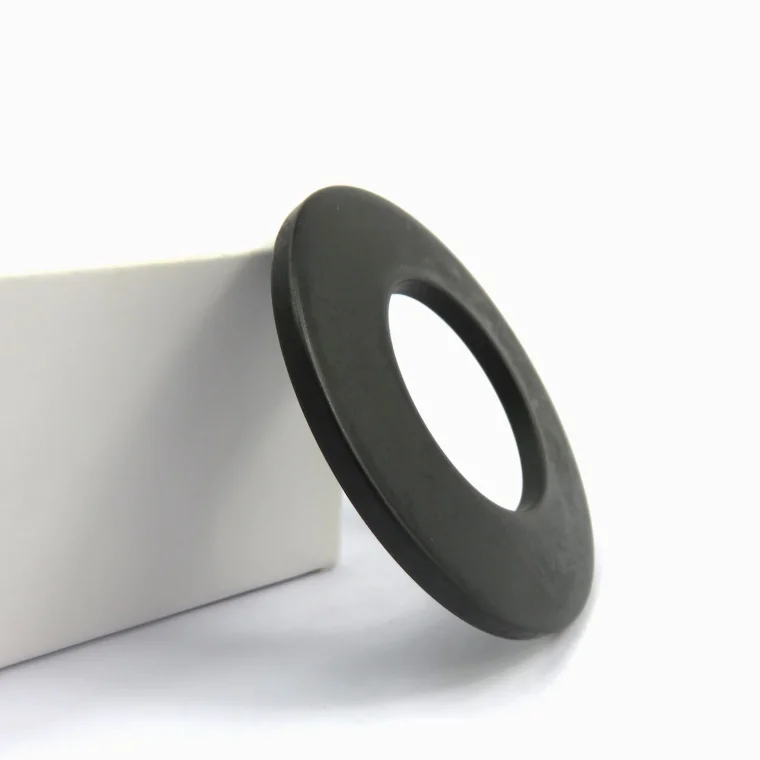In the modern food industry, X-ray inspection equipment is being adopted by more and more companies as an important means to ensure product safety and quality. Its main function is to detect foreign matter in food, such as metal, glass, ceramics, bones, plastics and other unexpected substances, to ensure the health and safety of consumers. However, the accuracy of X-ray food inspection is not fixed, and it will be affected by many factors. If not paid attention to, these factors may lead to false detection, missed detection, and even affect the credibility of the entire food safety management system.
This article will comprehensively analyze the key factors affecting the accuracy of X-ray food inspection from multiple dimensions to help food companies optimize the inspection process, improve the reliability of inspection, and ensure that products meet the standards.
1. Physical properties of the food being inspected
1.1 Food density and uniformity
The principle of X-rays is to penetrate objects and form images based on their density and thickness differences. The density and internal structure of the food itself have an important impact on the inspection results. For example:
High-density foods (such as meat products, nuts, chocolate): They are relatively "bright" in X-ray imaging, which can easily cover up foreign matter and reduce the recognizability of foreign matter.
Foods with uneven density (such as biscuits with kernel fillings and puffed foods): The density varies greatly, and "artifacts" or background noise will appear in the X-ray image, which may cause the system to misjudge.
1.2 Food shape and arrangement
The shape and arrangement of food will also affect the image clarity and recognition accuracy. For example:
Strips or curled foods may cause foreign objects to be "hidden" in the food outline;
The stacking and occlusion of foods in multi-piece combination packaging (such as candy platters) will cause blurred imaging in certain areas;
The deviation and overlap of food on the conveyor belt will also reduce the recognition clarity of the X-ray image.
2. Types and characteristics of foreign matter
2.1 Material of foreign matter
Different materials have different absorption capacity for X-rays, so their identifiability is also different:
Metallic foreign matter: strong absorption capacity for X-rays, good imaging effect, and easiest to detect;
Glass and ceramics: high density, but some types (such as lightweight glass) are similar to the density of food, which makes detection more difficult;
Hard plastic and rubber: less absorption of X-rays, low imaging contrast, easy to miss;
Natural foreign matter such as bones and wood chips: small density difference, almost unrecognizable in some foods.
2.2 Size and shape of foreign matter
X-ray detection equipment usually has a minimum detectable size, and foreign matter below this size will be difficult to identify. At the same time, the shape of foreign matter will also affect system recognition:
Small, round foreign matter appears as dots in the image, which is easily confused with the natural texture of the food;
Slender, sharp foreign matter is easier to identify.

3. Equipment performance and setting parameters
3.1 Power and energy setting of X-ray source
The penetration ability of X-rays is determined by its energy. If the energy is set too low, it may not be able to penetrate high-density or multi-layer food structures, resulting in blurred images; if it is set too high, it may cause image contrast to decrease or details to be lost.
Reasonably matching the type and thickness of food to adjust the X-ray source energy is the key to improving accuracy.
3.2 Detector resolution and sensitivity
The detector is the core component that affects image quality. The higher its resolution and the stronger its sensitivity, the better its ability to identify tiny foreign objects. High-end detection equipment often uses advanced linear or planar array detectors, which make images clearer and more accurate.
3.3 Image processing algorithm
Modern X-ray detection equipment widely uses artificial intelligence and machine learning algorithms to improve image recognition capabilities. For example:
Multi-channel image overlay analysis;
Foreign object edge recognition algorithm;
Comparison with product shape database to identify abnormalities;
Self-learning mechanism to optimize error tolerance.
The degree of optimization of the software system has a decisive influence on the final detection results.
4. Operation and maintenance factors
4.1 Equipment calibration
After the equipment has been running for a long time, the X-ray source may decay and the detector sensitivity may decrease. Regular calibration must be performed to ensure the accuracy of each parameter. If the calibration is not in place, it is very easy to cause missed detection or false alarm.
4.2 Operator skills
Although modern X-ray equipment is mostly automated, operators still need to master basic setting adjustment, image observation, abnormality judgment and other skills:
Judge whether the image abnormality is a real foreign body;
Manually confirm the alarm;
Choose the appropriate detection mode (such as high-density mode, light foreign body mode);
Regularly update the product library and detection algorithm parameters.
4.3 Cleaning and maintenance status
If there are pollutants such as dust, water vapor, and oil stains in the detection area, it will interfere with the X-ray path, cause image noise and even damage the equipment. It is necessary to clean the conveyor belt, X-ray window, lens and other key parts regularly.
5. External environmental factors
5.1 Temperature and humidity
X-ray equipment generally has certain requirements for the use environment. Too high or too low temperature and humidity may affect the stable operation of electronic components. Excessive humidity may even cause the internal circuit to become damp, resulting in false alarms or system failures.
5.2 Vibration and interference
If there is strong mechanical vibration or magnetic field interference on the production line, it may affect the stability of the equipment or the detection accuracy. It is recommended to use a shock-absorbing device or an isolation design.
5.3 Conveying speed change
If the conveyor belt speed is too fast, the image sampling will be insufficient; if the speed is unstable, the image will be distorted. Therefore, the appropriate conveying rhythm should be set according to the characteristics of the food to avoid "overspeed" detection and identification deviation.
6. Interference of product packaging
6.1. Influence of packaging materials
Certain packaging materials, such as composite bags containing aluminum foil and high-density plastic boxes, will affect the X-ray penetration rate and reduce the image quality. Common situations are as follows:
Metal packaging: reflects or shields X-rays, and the detection is basically ineffective;
High-density PET plastic: easily confused with foreign objects, increasing the probability of false detection;
Modified atmosphere packaging (MAP): gas filling will form image artifacts.
6.2 Label and printing interference
Oversized labels or printed patterns may form a strong contrast area during imaging, making it difficult for the system to identify. It is recommended to avoid setting the label directly below the detection area.
7. Setting and Optimizing the Detection Process
7.1 Multi-stage Detection Mechanism
For high-density and multi-layered foods, it is recommended to configure multiple X-ray devices for multi-angle detection, such as dual-channel imaging directly above and obliquely from the side, to improve recognition accuracy.
7.2 Use with other detection technologies
The combination of X-ray detection with metal detectors and visual recognition systems can achieve a complementary effect. For example:
Metal detectors identify highly sensitive metal foreign bodies;
X-ray equipment makes up for its blind spot in detecting non-metallic foreign bodies;
Visual systems identify surface defects, color anomalies, etc.
Although X-ray food detection technology is advanced, its accuracy is affected by multiple factors, and negligence in any link may lead to detection failure. In order to truly achieve efficient and accurate foreign body detection, food companies must start from food characteristics, equipment performance, operating procedures, environmental conditions and other aspects, and carry out systematic optimization and management.
Only in this way can the technical value of X-ray detection equipment be fully utilized to provide consumers with safer and higher-quality food products.
If you need customized X-ray inspection equipment, please contact our professional team. We will provide full process support from selection to implementation.
www.vixdetect.net
Shanghai Vixdetect Inspection Equipment Co., Ltd.




+ There are no comments
Add yours